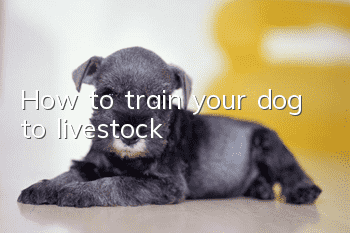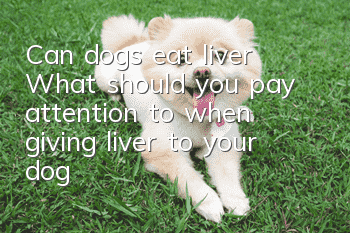How to train your dog to “livestock”

Herding dogs learn herding techniques mainly through imitation. Therefore, in order to train a good herding dog, you must first choose a good puppy and let it often follow other herding dogs to herd livestock. In addition to herding sheep and cattle, livestock dogs can also be used to herd geese, ducks, chickens, etc. At present, shepherd dog competitions are often organized in the UK. In the competition, the sheepdog must drive 10 sheep from a distance of 800 meters into a designated fence or road. The dog must concentrate, not bark, move skillfully, and spend a short time. If the dog spends a long time in the competition, bites or attacks the sheep that do not obey the driving, it will be disqualified.
Suitable age: 8 months-0 months
Training objectives: There are many training methods according to the type of dog and the requirements and form of shepherding, but the basic requirement is to move every command. Let the dog master the passwords during training: "stop", "start", "left", "right", "forward", "return", etc.
Applicable dog breeds: Shepherd | Scottish Shepherd | German Shepherd | Border Collie
Venue: Livestock Farm
Equipment: 4-meter traction rope | baton
Level: University (Professional)-Professional Skills Training
Training cycle: 60 minutes*40 times
Steps to train a dog to “herd”:
Step 1: Herding Herding is the dog’s ability to circle sheep and gather them. This ability of a dog is related to the breed and training level of the dog. For example, the Bird Collie adopts a rather wide and round shape, while the New Zealand Sheepdog adopts a pear-shaped shape. Young dogs may especially like to be herded on one side, and this is allowed before the dog is fully proficient. When it has the ability to herd, gather sheep, and drive sheep on one side, it is necessary to cultivate the ability of the dog to herd on both sides. When starting the herding training, the dog can be close to the sheep, and then gradually move away from the sheep for the herding training. If it always grazes on the right, a fence or fence can be used to restrict the right side of the flock, forcing the dog to graze and drive on the left or around the fence to the left. It is extremely necessary to train dogs to herd "outside" or in a larger area, especially when the sheep are far away or out of sight. This requires the dog to run directly to the sheep, otherwise the sheep will be lost. .
Step 2: Go out to herd again. After the dog goes out to herd and gathers a group of sheep, the dog owner uses the whistle or command "Go again" to re-instruct the dog.Wave the dog away and gather the other sheep. It is required that even if there is no sheep target, as long as there is a direction indicated by the dog owner, it can still go out to herd with purpose. The training to return to herding must be carried out after the dog has a good response to the "go back" command. Hand gestures and batons can be used for collaborative training. In the early stages of re-shepherding training, the sheep must be seen in the direction in which the dog owner directs the dog to re-shepherd. Only when the dog is very familiar with and interested in re-herding can it develop the skill of blind herding.
Step 3: Driving Dogs with a strong desire to gather sheep are more difficult to learn to herd. The following method can be used, that is, on a narrow road or road that is well fenced. The road is crowded with sheep, and it is difficult for the dog to get in front of the sheep. The dog owner drives the sheep together with the dog, and uses the left and right hands to direct the dog, encourage the dog to drive forward, and consciously lag behind the dog, and encourage and praise it to complete the driving task alone. As the dog's ability improves, the owner's encouragement gradually decreases, and the distance behind it gradually increases until the dog can complete it independently. Occasionally, it can be allowed to return to its owner with the flock of sheep.
Step 4: Guidance The Guidance skill is very useful for Shepherds. It is a change of the Interception skill. The key to training is to train the dog to act like the "leader" of the flock. It can only be trained after it has mastered the commands "come closer" and "back off". During the exercise, the dog is far away from the front of the sheep, waiting for the sheep to approach. As the sheep approach, the dog owner can give the "back up" command and instruct the dog to retreat a certain distance backward, and then wait for the sheep. approach, then repeat the process and stop any sheep from suddenly leaving. If the dog cannot follow the command "Back", you can use a large group of sheep to force it to retreat. In this way, most dogs will eventually retreat, and most of them will be reluctant in the end, unlike dogs that surround the sheep. When the dog owner wants to urge the sheep to move forward, he should call the dog to his side and release his blockade on the front of the sheep.
- The dog doesn't sleep at night and walks back and forth. What's the reason why the dog doesn't sleep at night?
- How to treat urinary tract stones in dogs? Dogs may need surgery!
- What should I do if my dog has no milk? The owner should check quickly and don’t let the puppies starve to death.
- How to make your dog’s hair look beautiful. Looking at your dog’s hair with beautiful hair makes you feel good!
- Dog’s anal gland odor, please note that this is a sign of your dog’s health!
- What are the symptoms of dog pain? How to detect dog pain early
- How to make your dog like to eat dog food Four ways to make your dog fall in love with dog food
- Can dogs digest peach pits if they eat them? Can dogs digest peach pits if they accidentally eat them?
- How to protect your dog’s food? Teach you tips on training your dog
- Why do dogs defecate everywhere? How can dogs stop defecating everywhere?



